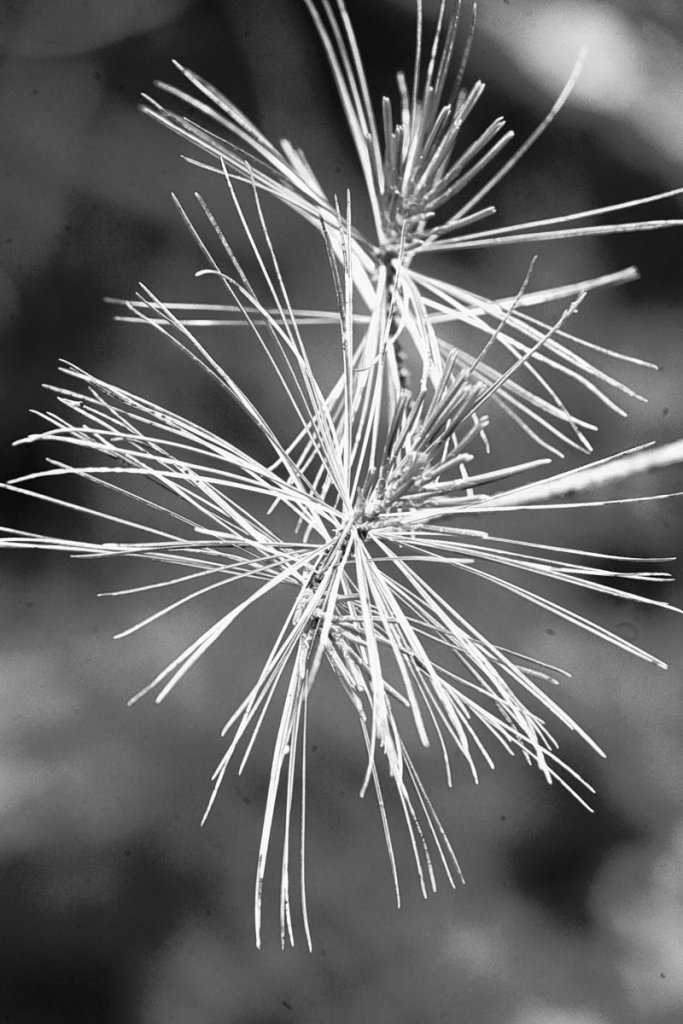Along with heavy downpours from thunderstorms in recent weeks, many residents in the Monadnock Region — and throughout New Hampshire, Maine and Vermont — have been noticing showers of a different kind.
Forest officials have been flooded with reports since last month of white pine trees dumping their needles in droves, said Kyle Lombard, forest health specialist with the N.H. Division of Forests and Lands.
The cause, foresters say, is two species of fungus — commonly known as white pine needle cast and brown spot needle blight — that are thought to have hit trees especially hard during last year’s wet spring and summer, when conditions were ripe for the fungi to flourish.
Wet weather in spring 2008 also likely contributed to the problem, according to officials at University of New Hampshire Cooperative Extension.
The fungus, which infected interior needles on the pine trees as they developed new shoots last year, causes affected needles to die and fall off.
Patches of affected trees in the Monadnock Region have been reported, especially in the northwestern side of the region, said Cheshire County Forester Steven S. Roberge.
Surry resident Jeannie Perry said she started noticing a couple weeks ago that the pine trees in her yard had suddenly yellowed and were losing their needles.
“It looks like (the trees are) dying,” she said. “Not the tops, they’re okay, but it looks like it’s going up.
“I was really worried that they would have to be taken down.”
She said she’s noticed similar problems while driving up Route 12A to Alstead.
Patches of trees affected by needle cast have been reported in the state for about three years, Lombard said.
“But this is epic,” he said.
Needles on trees affected by the fungus turned yellow or brownish in mid-May, especially on lower branches, while the tops often remain green.
Trees of all sizes can be affected by the fungus.
In a report released this month, officials from the Vermont Department of Forests, Parks and Recreation said the condition may have been worsened by this year’s unusual spring weather.
With unseasonably warm weather in early spring followed by a cooling period, buds and early foliage growth on many hardwood trees were damaged.
The needles on pine trees, already vulnerable from the fungal infection, may also have lost their cold-hardiness and been damaged by the freezing temperatures, according to the report.
Another factor possibly working against the white pines this year is a heavy pinecone crop last year that left branches at the top of the trees with sparse foliage even before the needle cast began affecting them, Lombard said.
The relatively dry weather this spring — as new needles have been developing — bodes well for the trees making a full recovery from the needle cast outbreak, Lombard said.
“If the drier weather continues through June, there should be less needle cast in June 2011,” he said.
And last weekend’s thunderstorms, which brought high winds and heavy rains, helped to clear away many of the damaged needles and leave room for new needles coming in, said Chuck Hersey, UNH Cooperative Extension educator in Sullivan County.
“Already the trees are looking better,” he said.
New needles appearing this year have been green and generally healthy, said Cheryl Smith, plant health specialist with UNH Cooperative Extension.
But people can expect the tops of trees to look thin through the rest of the year and trees already unhealthy from other stresses may be further weakened by the fungus, Smith said.
Officials from the state forest and lands division say further reporting from residents of trees affected by needle cast is not necessary, but they encourage residents to report other tree problems such as insect infestations or other diseases.
Foresters and state officials investigate those reports to determine the cause and to try to catch any new invasive species early, Roberge said.
Send questions/comments to the editors.



Success. Please wait for the page to reload. If the page does not reload within 5 seconds, please refresh the page.
Enter your email and password to access comments.
Hi, to comment on stories you must . This profile is in addition to your subscription and website login.
Already have a commenting profile? .
Invalid username/password.
Please check your email to confirm and complete your registration.
Only subscribers are eligible to post comments. Please subscribe or login first for digital access. Here’s why.
Use the form below to reset your password. When you've submitted your account email, we will send an email with a reset code.